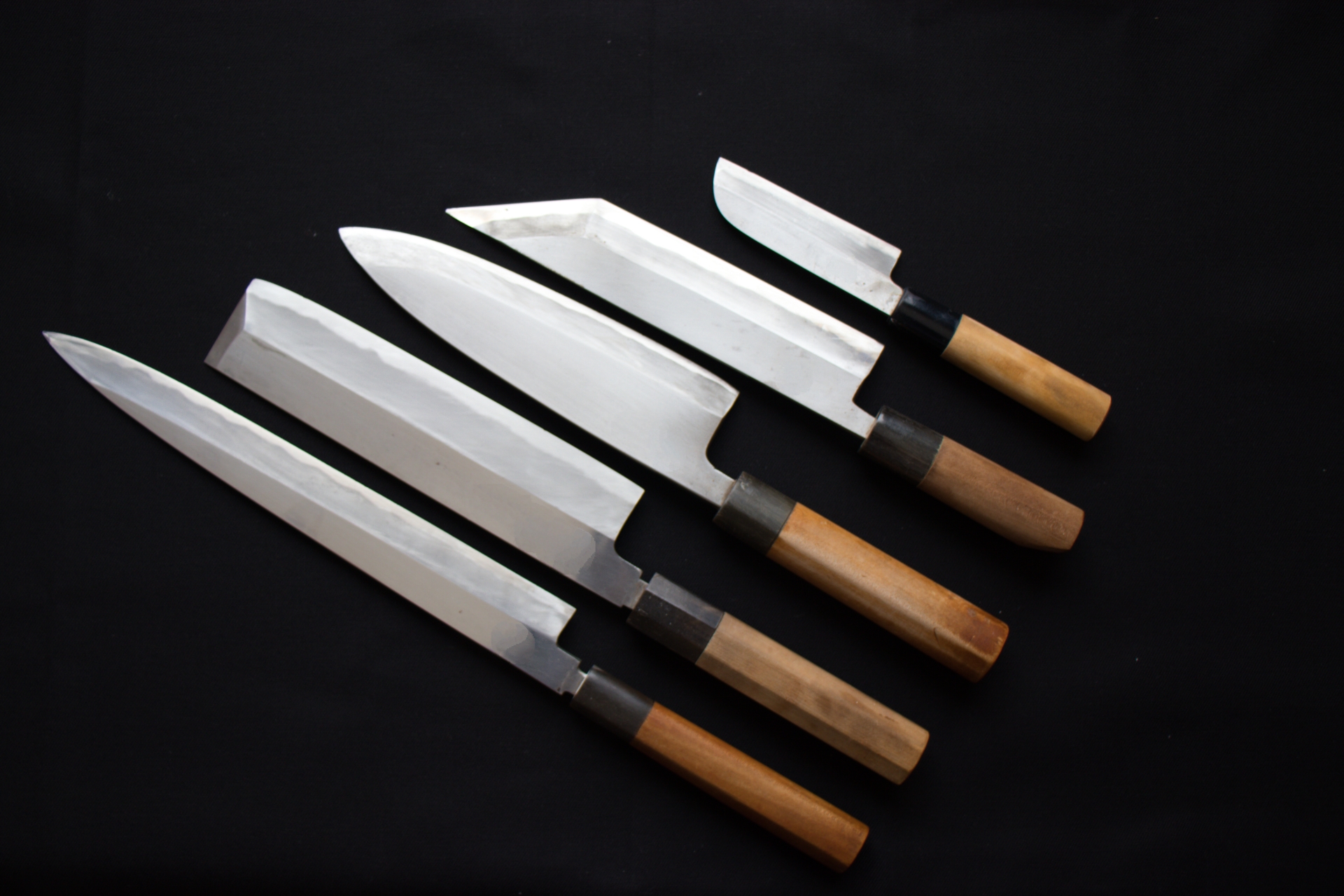When you are cooking Japanese food, using a Japanese knife will make everything easier and the food will taste better. Although you may find it hard to believe that a knife can simply change the taste of your food, you’d be surprised! There is a wide range of knives that can vary in price from the cheap end to extremely expensive, but why is it so important that Japanese foods need to be prepared with Japanese knives? There are many reasons why Japanese people are so particular about their kitchen knives, and one of the big ones is that there are a number of positive things that well made Japanese kitchen knives bring to the table. Nowadays, the highly valued Japanese knives have spread overseas, and even top class foreign chefs use them in everyday cooking. Let’s take a closer look at the little known secrets and advantages of using Japanese kitchen knives.
The History of Japanese Knives
The history of kitchen knives in Japan dates back to the late Kamakura period(1185-1333). Good quality water, charcoal, and soil were discovered during this time in Seki, Gifu Prefecture, and people began to use these materials to make quality Japanese katana(swords). Nowadays, Seki has become “a town of cutlery” that makes the best kitchen knives, utilizing the traditional techniques of Japanese katana. Seki is now known as one of the “Three S cities of cutlery”: Solingen in Germany, Sheffield in England, and Seki City in Gifu Prefecture, Japan. Japanese knives, which originated from Japanese katana, are remarkably crafted using knife making techniques that have been passed down from generation to generation.
The notable features of Japanese knives
Japanese knives influence many aspects of every dish they assist in making. Let’s take a closer look at what ways Japanese knives can influence your cooking.
Sharpness
The sharpness of Japanese kitchen knives is unrivaled in the world. Today, there are still many knife craftsmen in Seki City who produce extremely sharp knives that foreign knife manufacturers order, showing their respect for the high level of skill. When a well-sharpened Japanese kitchen knife is washed with a soft sponge, the sponge can be cut through just by grazing the blade. That is how sharp Japanese kitchen knives are. However, the longer you use the knife, the more the blade will start to wear out and become dull quickly, so regular maintenance is important. If you take good care of your knives, they will surely become some of your favorite kitchen items that you will treasure for a long time.
The taste of the food
In many countries, food is cut by pushing the knife away from you. However, in Japan it’s the opposite. Food is often cut by pulling the knife towards you. By cutting food this way, and going with the grain, the food will have a smooth texture whereas going against the grain will take away from the taste of the food. Something very interesting to note is that the sharpness of a knife can completely change the taste depending on how it is used.
Appearance of the food
As stated above, one of the characteristics of a sharp knife is that it can cut food with the grain without taking too much away from its taste, which also creates a very beautiful cross-sectional appearance. For example, all Japanese dishes served in high-class Japanese restaurants are amazing in terms of appearance. One of the reasons for this is that the chefs working at these high class restaurants use sharp, good quality knives to make the cross section of the food look smooth and appealing. In this way, Japanese food is not only pleasing to the palate but also to the eyes.
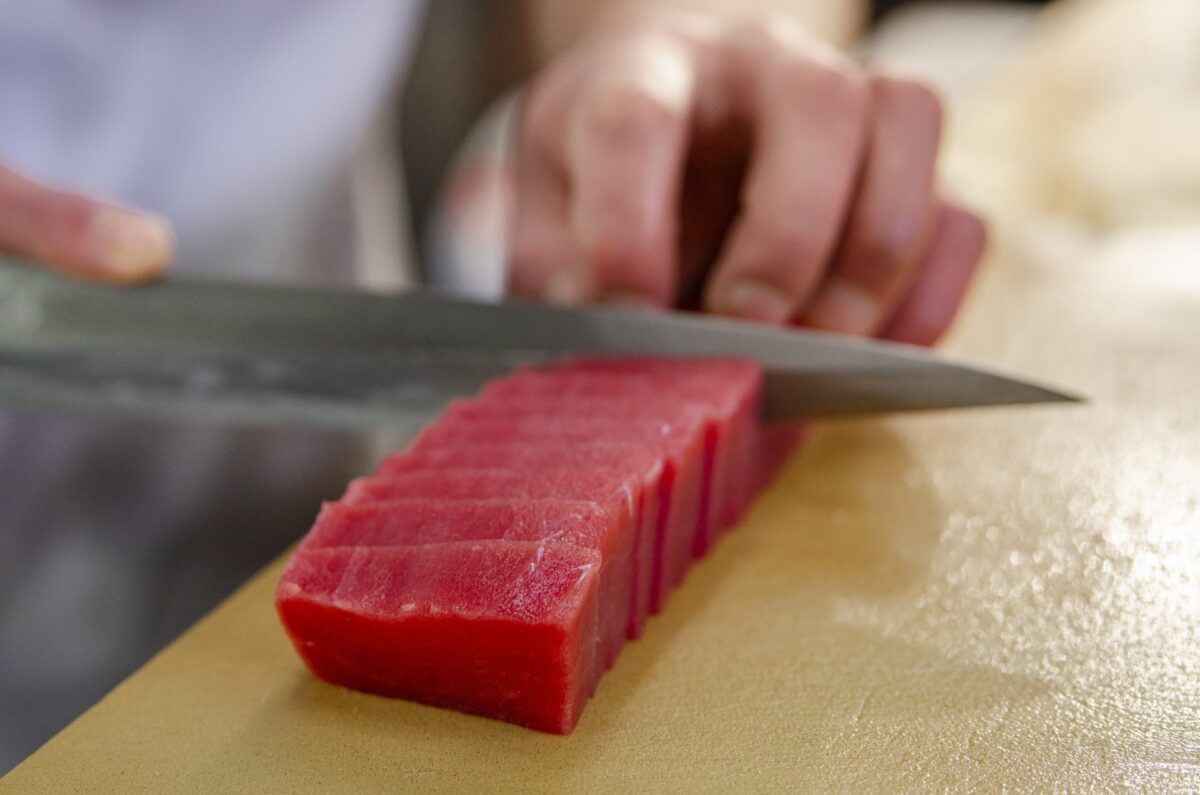
The various kinds of Japanese knives
There are so many different types of knives in Japan because there is a strong belief that different types of food should be cut by the knives suitable for each ingredient. In this section we will introduce a few of the many types of knives that are commonly used in Japanese households.
Santoku knife
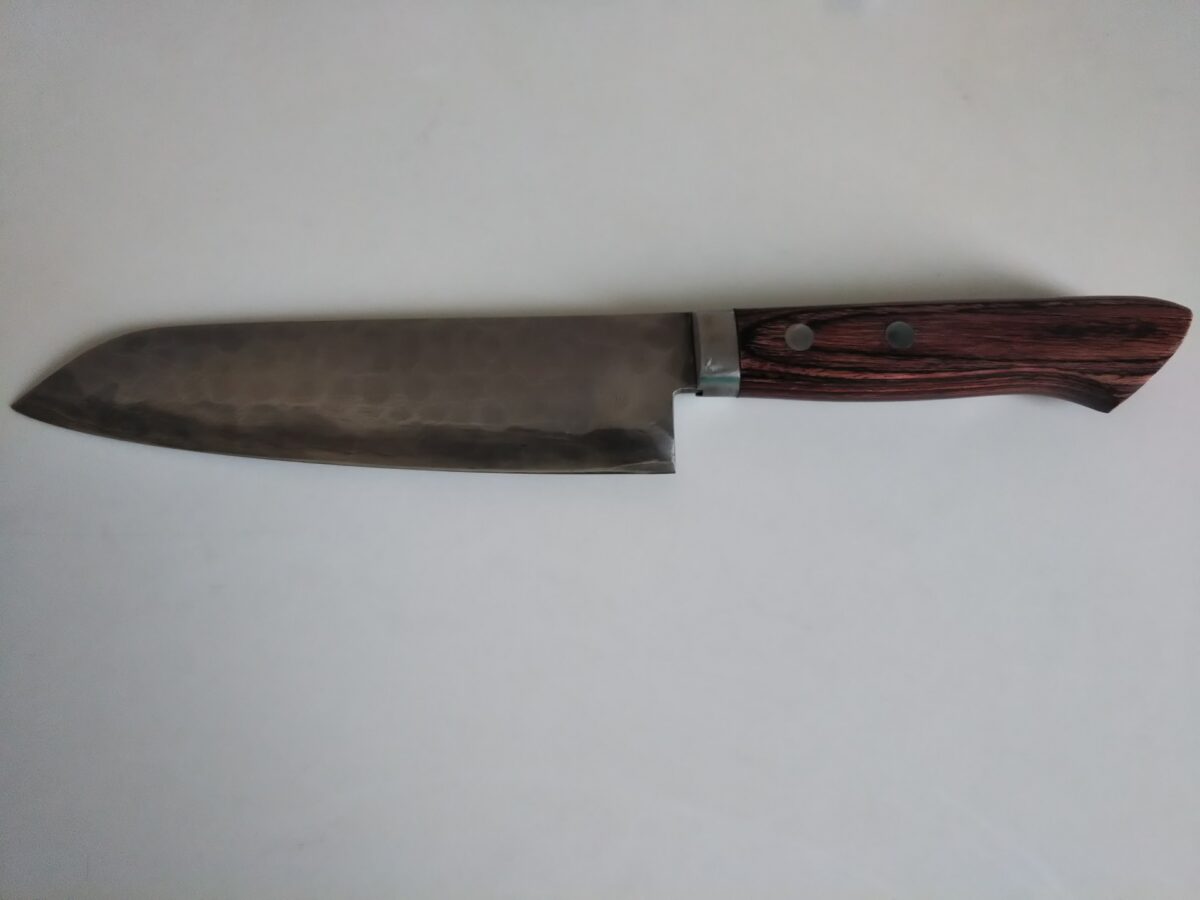
If anyone is interested in buying a Japanese kitchen knife for the first time, we would recommend a Santoku knife (三徳包丁). This type of knife is also called an “all-purpose knife (文化包丁)” and has double-edged blades that are usually about 15~20 cm long. As you may have guessed from its name, this type of knife can be used to cut a variety of different foods including meat, fish, and vegetables. Being so versatile, this knife may be all that you need in the kitchen.
Purchase here: Santoku Knives
Deba knife
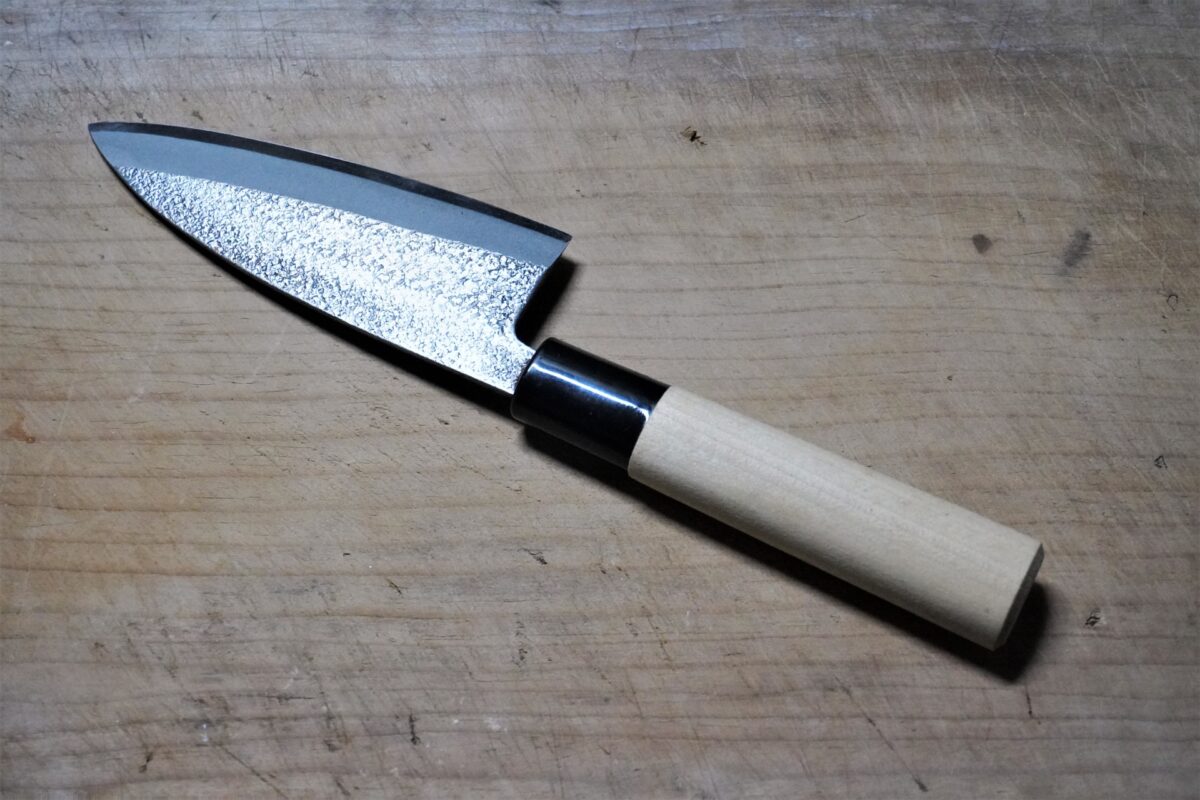
A Deba knife (出刃包丁) is a knife with only one blade, and is often used for cutting fish into big pieces and for removing hard fish bones or scales. The length of the blade is similar to that of a santoku knife, making it the perfect knife for people who often cook fish.
Purchase here: Deba Knives
Nakiri knife
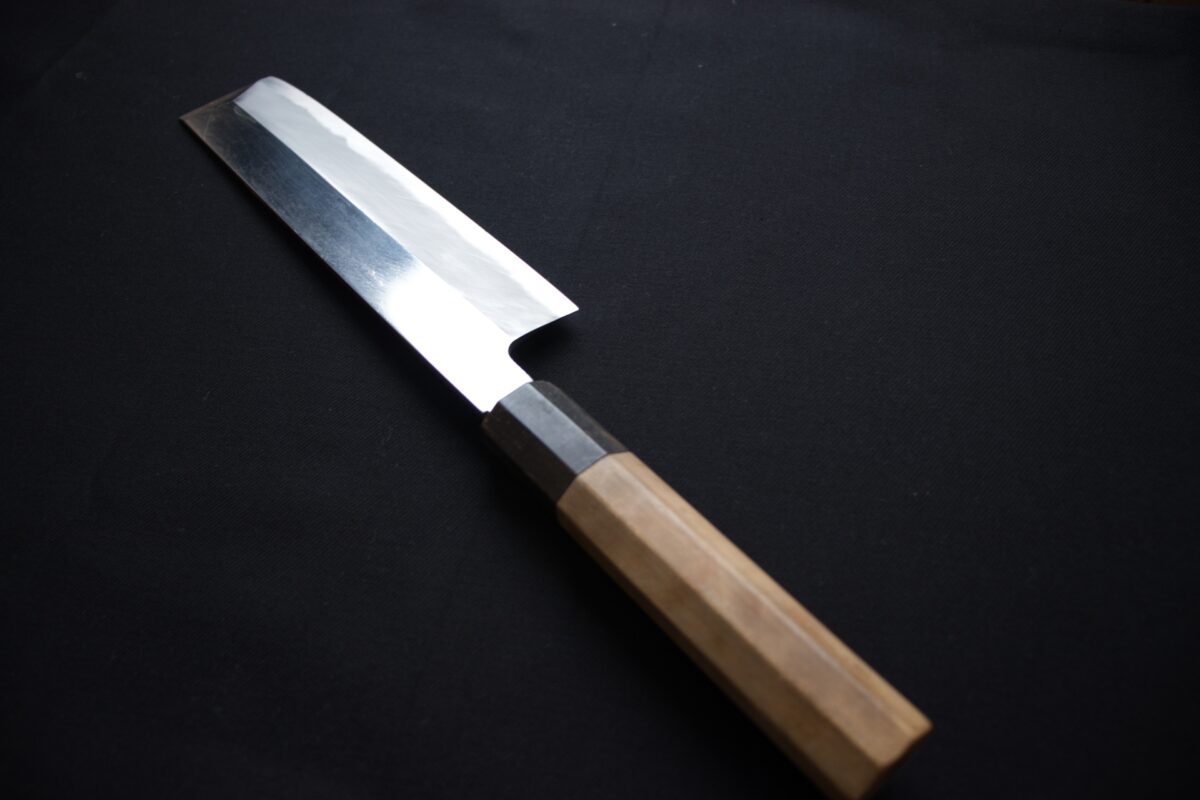
A Nakiri knife (菜切包丁) is a knife often used to cut vegetables. Unlike a Santoku or a Deba knife, it is square pointed instead of sharp pointed. The blade has no warp and is straight, making it easy for beginners to handle. Thanks to this straight blade shape, it is easy to cut vegetables in a straight line and also suitable for peeling vegetables like carrots and potatoes.
Purchase here: Nakiri Knives
Sashimi knife
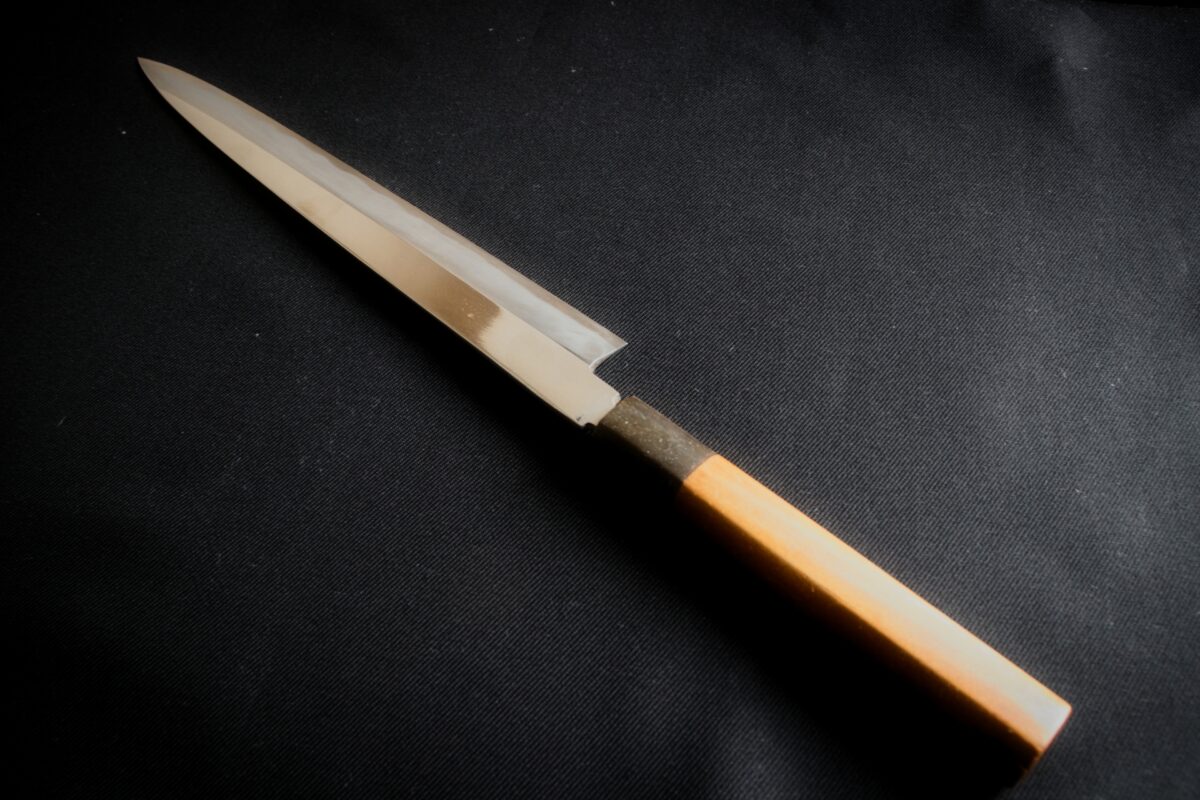
Sashimi is one of the most popular Japanese dishes as it is simple and allows you to really taste the flavor of the fish. When cut cross-sectionally, the sashimi turns out shiny and very appetizing. The sashimi knife (刺身包丁) is what makes the sashimi turn out this way. By using a sashimi knife, not only can you make the cross-section of the sashimi look smooth, but the texture will also be much better and easy to eat. If you like sashimi and want to try making it yourself, a sashimi knife might be a great investment for you.
Purchase here: Sashimi Knives
Where to buy Japanese knives
If you want to buy Japanese kitchen knives in the Tokyo area, we recommend you visit the Kappabashi shopping district. You can get there by walking a short distance from Asakusa. They should have all the kitchen utensils you need. Many chefs and cooks from all over Japan flock there to find their favorite cooking tools. There are several stores specializing in kitchen knives in this area so if you are unsure about which knife to buy, please ask the staff at each store. They will help you choose the right knife for you that suits your budget.
Are you not currently living in or visiting Japan but are still looking to buy an authentic Japanese knife for a reasonable price? We have you covered. Hocho Knife is a great website that has all different kinds of Japanese knives for every cooking occasion you may encounter. Their website is in English and they ship all over the world. Even better, they offer FREE shipping on purchases over $250! Have a look here.
Best Japanese Knife Website: Hocho Knife
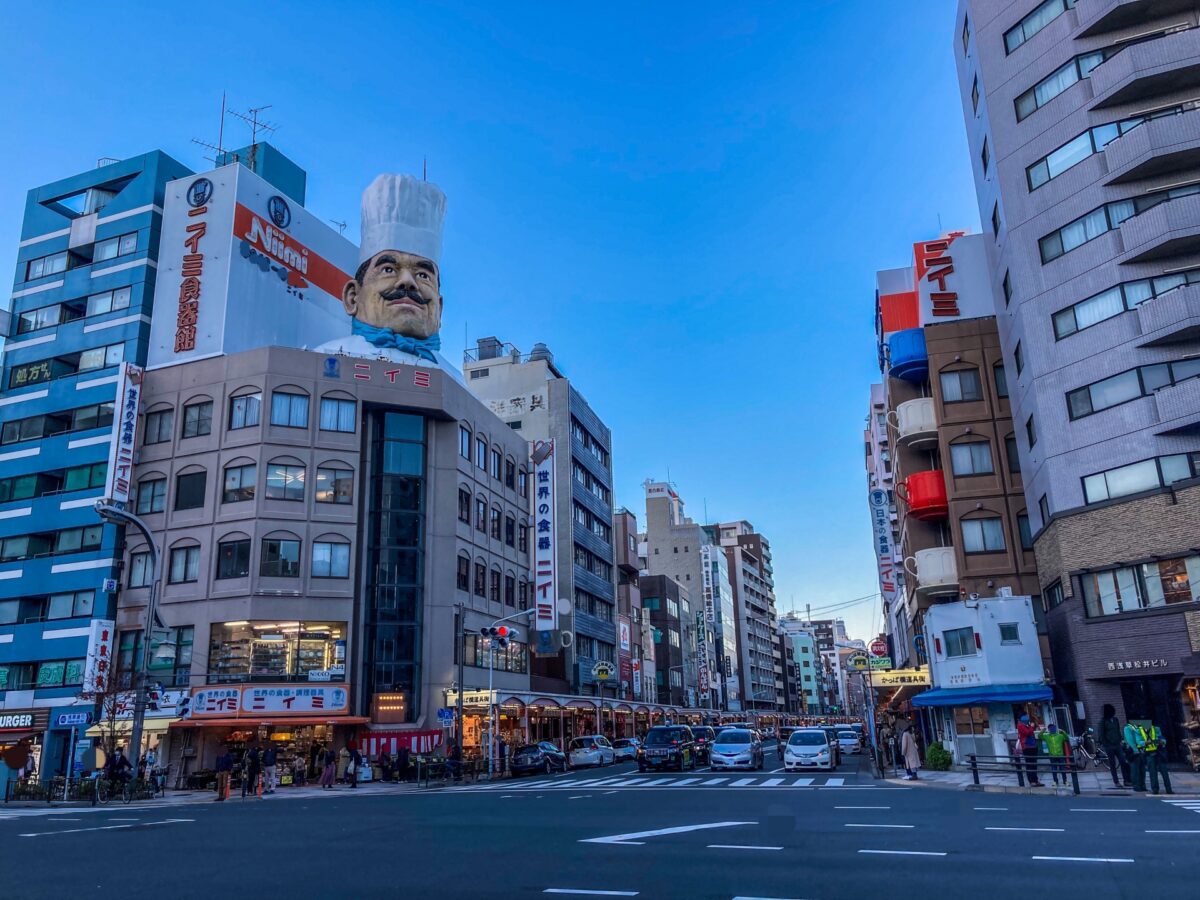
With a long history, knives are a big and important piece of Japanese culture. Since they are frequently used at home by many people, knife makers are constantly researching and working hard to improve and tweak each type of knife to help make them even sharper and easier to handle. Now more than ever, Japanese knives are a very important cooking tool that are indispensable when making Japanese food, and the taste and appearance of the food can vary greatly depending on which knife is used. What do you say, are you ready to improve your kitchen and cooking with a Japanese knife?
Follow us on Instagram, Facebook and Twitter for more travel inspiration. Or tag us to get featured!
Happy traveling!
Other articles you might be interested in

Mao Goto is a Japanese freelancer who was born in Hayama, Kanagawa prefecture, and raised in Tokyo. Since 2016 she lives in the Taito Ward, home to a lot of Japanese culture hotspots such as Asakusa, Akihabara, and Ueno. She has been interested in the field of English education of Japan and got her Master’s degree in March, 2020. A lover of photography, travel, sweets, and cross-stitch. Contact her via Facebook.
This post may contain some affiliate links. When you click through and make a purchase we may receive some commission, at no extra costs to you.
